Processing ZWO Seestar images
This tutorial explores the pre-processing and processing of images obtained from ZWO Seestar. Pre-processing will be carried out using a dedicated script.
YouTube tutorial by Rich Stevenson #
Preprocessing #
1. Download the script to preprocess your images #
We’ve created a script tailored to the pre-processing of your seestar. This means that this script expects to have several images which it will stack. In the
current version of Siril, you need to download it manually by following this link
.
Place the downloaded file (Seestar_Preprocessing.ssf) in the location of your
choice, then in Siril’s preferences, in the script tab, enter the folder you
have chosen. You must enter the full path in the box labelled 1 in the image below!
Once done, click on the button labelled 2. This will reload the script folders
and cause the script to appear in the Scripts menu.
Siril’s preferences in the script tab The script is now available in the menu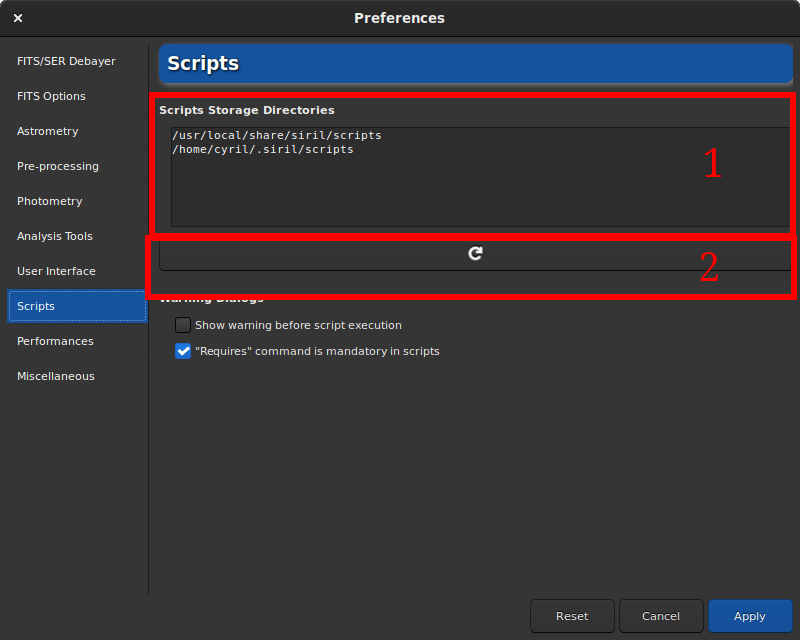
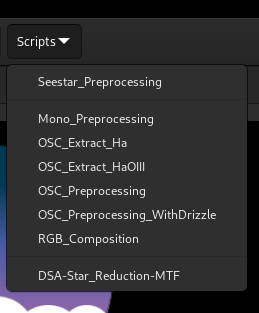
2. Create the folder to hold your images #
The seestar only gives access to light images. Calibration is therefore not possible. All you need to do is create a single directory in the folder where your images are stored.
Create the following directory named as:
lights
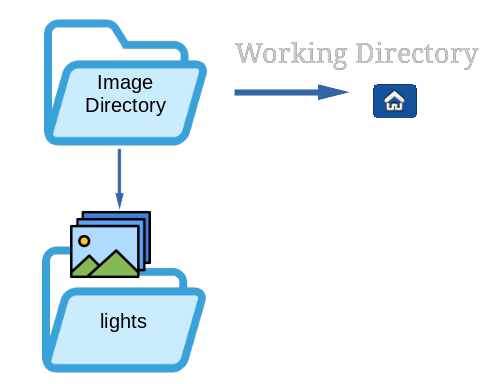
Folder structure as it should be defined.
3. Put your RAW images in the directory created in the previous step #
Attention: don’t mix other files, even JPEG (or other formats), with your RAW files: Siril will take all the files inside the directories as input files for processing.
4. Click on the home button and navigate to your project folder #
This tells Siril where all your images are located. Select the root directory
of lights, not the lights itself and validate with the Open button of the
opened dialog.

Headerbar of Siril
Siril will validate your working directory, which will be indicated in the application’s title bar. Check that it’s the right one.
5. Click on the Scripts button and select the script of your choice #
The script that covers Seestar needs is named Seestar_Preprocessing. Click on it
and wait until it is complete.
6. Load the stacked image #
The stacked image is normally located next to your lights folder and the newly created process folder. It should be named according to the object photographed and the number of images stacked like for example: NGC_2175_268x20sec_T7°C_2024-03-07.fit.
Click on the Open button and load the image.
The image displayed is very dark, but this is normal. Switch to Autostretch viewing mode to see the image.
Please note that this is only a viewing mode and does not change your image.
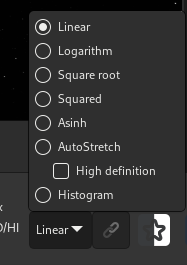
Visualization menu
Processing #
Once pre-processing is complete, it’s time to process the image. Basically you need :
- crop if necessary
- remove gradient
- color calibration
- stretch histogram
- save image
Of course, there’s more you can do, but if you’re on this page, you’re a beginner and we’re going to keep it simple.
1. Crop the image if needed #
Seestar tracking is far from perfect. The result is a lot of field rotation from one frame to the next. It is therefore advisable to crop the image if the edges are not pretty. If not needed, skip to step 3.
Simply make a selection with the left click of the mouse, then right-click to bring up a popup menu and choose the crop item.
2. Background extraction #
This step removes the gradient that may be present in your image. A tutorial detailing the whole process has been written here .
3. Color Calibration #
Siril offers two ways to retrieve the colors of your image. Here, “retrieve” means re-balancing the RGB channels to get as close as possible to the true colors of the shot object.
The best way for retrieving the colors is to compare the color of the stars in the image with their color in catalogues, to obtain the most natural color inan automatic and non-subjective way. This is done with the PCC (Photometric Color Calibration) tool.
To operate, the tool needs to know the exact position of the stars. In the 1.2 series, Siril enables astrometry before color calibration in the same tool. Seestar images have all the necessary information in the file header for astrometry to work properly (there’s no need to search for the object name and click on Find). Just press the OK button to perform astrometry, then photometry, automatically.
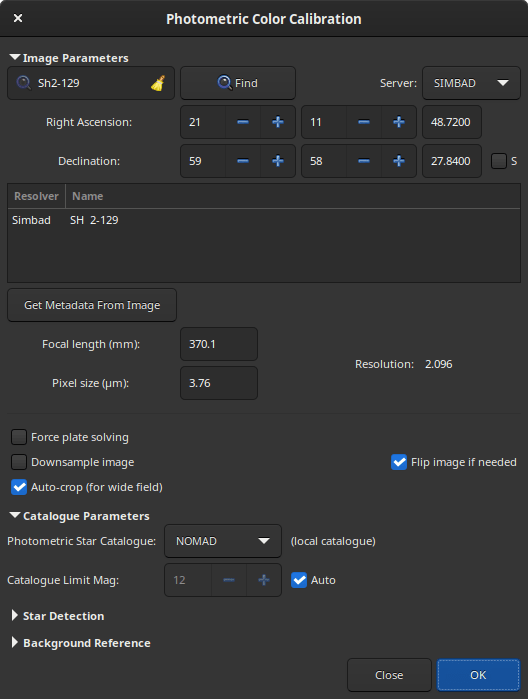
Photometric Color Calibration
4. Stretch Histogram #
Basically, there are 3 tools for stretching the algorithm in Siril.
- The best way to stretch the histogram is to use the Generalized Hyperbolic Stretch tool. This is explained in detail in this tutorial . Before stretching the histogram, it is generally advisable to switch back to linear viewing. To see on screen what the image actually looks like.
- The simplest tool is Histrogram Transformation. It does not, however, give the best results. It is explained in detail in this tutorial .
5. Save image #
You can save your image at any time. However, if you wish to save it in a format readable by other software, click on the button shown in the illustration below.
Saving an image